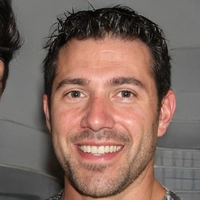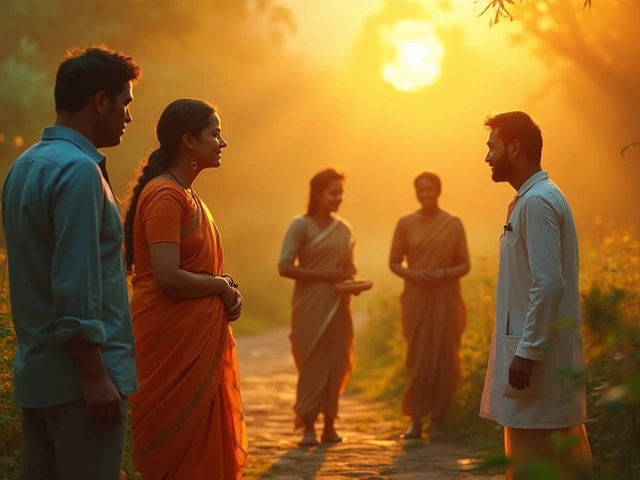
If you're tired of giant hospital bills in the US, you're definitely not alone. More folks are eyeing Costa Rica for medical treatment—at a fraction of what the same thing would cost stateside. But does 'cheaper' mean 'better'? Not always. The reality is more interesting, and it all comes down to what you actually need from your health care.
Costa Rica's clinics and hospitals aren't some back-alley setups. Many are clean, high-tech, and run by doctors who trained in the US or Europe. So, this isn't just a money-saving hack for minor issues. We're talking about real surgeries, dental work, even complex procedures—sometimes bundled with a vacation in the rainforest. Imagine getting dental implants or a knee replacement, then recovering on a beach instead of your couch at home.
But what about safety, access, and long-term care? Is the language barrier a pain? How much do you really save when all is said and done? Let's cut through the marketing, look at real experiences, and see what Costa Rica has to offer that US hospitals don't—or can't.
- Quick Snapshot: Costa Rica vs US Healthcare
- Costs: How Much Can You Really Save?
- Quality and Safety: Are Doctors in Costa Rica Any Good?
- Access and Waiting Times: What to Expect
- Popular Treatments for Medical Tourists
- Essential Tips Before Booking a Flight
Quick Snapshot: Costa Rica vs US Healthcare
The first question everyone asks: what’s actually different about getting medical care in Costa Rica compared to the US? The short answer is: cost, access, and the way things are run.
Costa Rica has a universal healthcare system, called the Caja. Everyone living there—locals and legal residents—can use it, and a surprising number of expats do, too. There are also plenty of private hospitals and clinics, which is where most tourists go for treatment. The US, by contrast, relies on a mix of private insurance, government programs like Medicare/Medicaid, and lots of out-of-pocket spending. Most Americans get their care at private hospitals and clinics unless they’re uninsured—and then it often gets tricky.
Here’s a side-by-side look at the numbers everyone cares about:
| Aspect | Costa Rica | United States |
|---|---|---|
| Healthcare System | Universal (public + private) | Mostly private, mixed public programs |
| Average Doctor Visit Cost (private) | $50–$80 | $150–$300 |
| Hospital Stay (per day, private) | $250–$500 | $2,000–$4,000 |
| Insurance Coverage Rate | Nearly 95% have access | About 92%, but mixed quality |
| Life Expectancy (2024) | 79.2 years | 76.4 years |
| WHO World Health Ranking (2024) | 36th | 38th |
What stands out? For basic medical appointments or procedures, Costa Rica’s prices are a fraction of what you’ll pay in the US. And get this: the World Health Organization actually ranked Costa Rica’s healthcare higher than the US as of 2024. That’s not a fluke—it’s based on access, quality, and public health outcomes.
Where’s the catch? In Costa Rica, public system wait times can be long, which is why most medical tourists opt for private hospitals, especially for planned surgeries or dental work. In the US, you can get quick access—if you have good insurance or lots of cash.
You get high-quality facilities and doctors in both countries, but the Costa Rica healthcare system offers affordability most folks in the US can only dream of. If you’re wondering whether the savings come at the expense of quality, the numbers (and tens of thousands of satisfied US patients) suggest otherwise. Ready to see how these costs play out in real-life scenarios? That’s up next.
Costs: How Much Can You Really Save?
Here’s where Costa Rica’s popularity for medical tourism really takes off. The numbers make jaws drop, especially if you’ve ever seen what a US hospital charges. Let’s talk real savings you can expect, not those magical figures clinics toss around in ads.
For most procedures, prices in Costa Rica run 50-70% less than in the States—even when you factor in flights, hotels, and playtime on the beach. It’s not just small stuff, either. Dental implants, heart surgeries, knee replacements—the bills in Costa Rica are enough to make any American ask, “Wait, is that all?”
Check this out:
| Procedure | Average US Cost | Average Costa Rica Cost |
|---|---|---|
| Dental Implant (per tooth) | $4,000 | $900 |
| Hip Replacement | $35,000 | $13,000 |
| Heart Bypass Surgery | $120,000 | $27,000 |
| Rhinoplasty (Nose Job) | $8,000 | $2,800 |
| IVF Cycle | $20,000 | $7,000 |
Keep in mind, a lot of clinics in Costa Rica include extra perks—like airport pickups, local helpers, and aftercare check-ups—in the total price. In the US, a Band-Aid can sometimes show up as a separate charge. Crazy, right?
If your insurance doesn’t cover your treatment back home, heading to Costa Rica can mean less debt and fewer headaches. But even with insurance, Americans get hit with deductibles and co-pays. Some folks do the math, see that Costa Rica still wins on the bottom line, and book their ticket.
- Always get a quote upfront from the clinic and compare it with your total costs in the US, not just what insurance pays.
- Double-check if follow-up care is included—traveling back for complications isn’t cheap.
- Budget for flights, accommodation, and maybe extra days for recovery.
The punchline: If you pick a solid clinic, you can save enough to pay for the trip, treat yourself to a volcano tour, and still come home with money in your pocket. That’s why medical tourism in Costa Rica is growing every year.
Quality and Safety: Are Doctors in Costa Rica Any Good?
This is where a lot of folks get nervous. Can you really trust the doctors down there? Short answer: In many cases, yes. Costa Rica is known for reliable, high-quality care at its main private hospitals. Actually, three of its hospitals—CIMA, Clínica Bíblica, and Hospital La Catolica—are internationally accredited, which means they meet the same standards as top US hospitals.
A lot of doctors in Costa Rica studied in the US, Canada, or Europe. They often speak English (sometimes even better than the staff at your local hospital, seriously). Most private hospitals are equipped with new machines and tech, and they’re used to treating patients from abroad. Some hospitals even assign you a personal coordinator who handles everything from your paperwork to translating medical details.
Wondering about the numbers? Let’s look at some hard data:
| Country | Doctors per 1,000 People | Hospital Accreditation | Medical Malpractice Rate (per 100,000 residents) |
|---|---|---|---|
| Costa Rica | 2.7 | 3 Joint Commission Int’l | 0.6 |
| United States | 2.6 | Over 700 (Joint Commission US) | 1.4 |
The Costa Rica healthcare system is regularly ranked in the top 3 in Latin America. According to the World Health Organization, Costa Rica actually edges out the US in life expectancy, which might surprise a lot of people.
But, and this is important, you want to stick to the top private hospitals if you’re coming from abroad. Go for clinics with international accreditation or loads of positive reviews from foreign patients. While the public system in Costa Rica is solid, it's really designed for locals, and things can move slower—think long waits, crowded rooms.
Here's what to double-check before booking:
- Make sure your doctor is board-certified—most hospitals list credentials online.
- Ask about the hospital’s safety ratings and accreditation status.
- If you need surgery, see if the facility is certified by Joint Commission International (JCI).
- Request some before-and-after patient stories, especially for dental or cosmetic work.
If you ever feel unsure, ask for a video call with your doctor before traveling. Most will happily chat in English and walk you through your procedure. Bottom line—Costa Rica’s setup for medical tourism is solid, but do your homework and stick with the well-known places for the safest experience.

Access and Waiting Times: What to Expect
If you’ve ever tried to get an appointment with a specialist in the US, you probably know it can mean waiting anywhere from a few weeks to even months—sometimes just to be told you need more tests, and then wait longer for those. In Costa Rica healthcare, things play out a bit differently, especially for medical tourists who use private hospitals and clinics.
The public system in Costa Rica (called Caja) tends to have long waiting times for locals, especially for surgeries or advanced imaging. For example, a knee replacement on the public system can mean a year-long wait. But nearly all foreigners coming for treatment use the private sector, where the story is completely different.
Private clinics in Costa Rica are much faster—sometimes shockingly so if you’re used to US standards. It’s common to get a consultation with a top specialist in less than a week, and major procedures like dental implants or orthopedic surgeries can often be scheduled within a few days to a couple of weeks. There are clinics that even offer same-day diagnostics and quick lab reports, thanks to smaller patient loads and a focus on customer service.
Here’s a real-world comparison of average waiting times for common procedures:
| Procedure | Costa Rica (Private) | United States (Average) |
|---|---|---|
| Specialist Appointment | 3-7 days | 2-6 weeks |
| Knee Replacement Surgery | 2-4 weeks | 3-12 months |
| MRI Scan | 1-3 days | 1-4 weeks |
| Dental Implants | 1-2 weeks | 1-3 months |
For medical tourists, most clinics offer English-speaking staff and help set up all your appointments in advance. You usually get a dedicated coordinator, which makes the process feel way more personal and less stressful. If there’s a catch, it’s this: spots fill up fast during the high tourist season (December-April), so plan ahead if you want those speedy appointment times.
One thing you won’t see in Costa Rica’s private system is endless paperwork or bouncing between insurance companies. Payment and booking are handled right at the point of care, and results are shared directly with you. If you do need follow-up care once you’re back home, most clinics can provide thorough documentation or help you connect with US-based doctors.
If fast access and minimal wait are your priorities, Costa Rica’s private healthcare is tough to beat—just make sure you check your specific clinic’s calendar before booking flights. Nothing ruins a recovery like scrambling for a last-minute spot in paradise.
Popular Treatments for Medical Tourists
When folks think about Costa Rica healthcare, they usually picture dental work, cosmetic fixes, or maybe some joint surgery—and for a good reason. Costa Rica’s clinics and hospitals offer these treatments so much cheaper than in the US, and the quality often surprises people.
Here are the top treatments that bring in thousands of visitors every year:
- Dental care – Cleanings, crowns, implants, veneers. Dental implants, in particular, are huge here. In San José, you’ll find entire clinics set up for US and Canadian visitors. A single dental implant can cost $900–$1,500 in Costa Rica, while the same thing might be $3,000–$6,000 in the US.
- Cosmetic surgery – Nose jobs, facelifts, breast augmentation, tummy tucks, liposuction. Costa Rica’s plastic surgeons are well-trained, and the results stack up against what you’d get at home—but the bill doesn’t.
- Orthopedic surgery – Knee and hip replacements stand out. Some hospitals bill just $12,000–$18,000 for a knee replacement, compared to $30,000–$50,000 in the US. Recovery on a beach doesn’t hurt either.
- Eye surgery – LASIK and cataract removal top the list. Major eye centers in San José can do LASIK for around $1,500–$2,000 (both eyes), while big US cities easily double that price.
- Fertility treatments – IVF, egg donation, and surrogacy are on offer, especially as Costa Rica has clear regulations and English-speaking experts.
- General checkups and wellness – Some travelers just come for preventive care, annual checkups, or diagnostic scans while combining appointments with a trip to the coast or volcano.
It’s not just marketing hype. Costa Rica has a bunch of private hospitals that actually advertise their international patient services, sometimes with staff dedicated just to foreigners. Many have US-accreditation from organizations like JCI (Joint Commission International), which means they keep up with global standards—useful to know if you’re worried about safety.
Here’s a side-by-side cost snapshot for a few popular treatments, just to get a feel for real savings:
| Treatment | Avg. Cost (Costa Rica) | Avg. Cost (US) |
|---|---|---|
| Dental Implant (single) | $1,200 | $4,000 |
| Knee Replacement | $16,000 | $36,000 |
| Rhinoplasty (nose job) | $3,500 | $8,000 |
| LASIK (both eyes) | $2,000 | $4,500 |
| IVF Cycle | $6,000 | $12,000 |
If you’re planning a big procedure, always check if there’s a recovery coordinator or English-speaking nurse available. Hospitals that serve a lot of foreigners usually have these, and it makes your whole medical trip way less stressful.
One last thing: don’t forget to factor in travel, hotel, and time off work. Still, even with those extras, people often save 40–70%. So, it’s easy to see why Costa Rica is such a hotspot for medical tourism right now.
Essential Tips Before Booking a Flight
Before you jump on a plane for treatment in Costa Rica, don’t just book the first clinic you see on TikTok. This is your health we’re talking about, so a little prep goes a long way. Here’s what you really need to know and do:
- Costa Rica healthcare can be top-notch, but always check if the hospital is accredited by the Joint Commission International (JCI) or has Costa Rica’s Health Ministry approval. Accredited places stick to global standards.
- Ask about the doctor’s qualifications: where did they get their training? Many top Costa Rican doctors studied in the US or Europe, but don’t assume—ask to see credentials.
- Request written, detailed treatment plans in English. You want zero surprises when you see the bill or post-op care instructions.
- Factor in the total price—not just the cost of the procedure. Budget for flights, recovery stays (usually 7-14 days for surgeries), medications, and any extra tests.
- Look into travel and medical complication insurance. Standard travel insurance may not cover planned treatments abroad. Try companies like Global Protective Solutions.
- Ask how the hospital handles emergencies. If something goes wrong, are you looked after? Can they transfer you quickly to a bigger facility if needed?
- Get everything in writing about follow-ups. Virtual consults after you’re home have become common, but make sure they’ll actually offer this, and ask the cost.
- If you don’t speak Spanish, check if the staff offers translation. Lots of hospitals have English-speaking staff, but smaller clinics may not.
Here’s a quick way to compare potential costs and logistics:
| Item | Typical Cost in Costa Rica | Typical Cost in US | Notes |
|---|---|---|---|
| Knee Replacement | $12,000-$15,000 | $35,000-$60,000 | Usually includes hospital stay |
| Dental Implant (per tooth) | $800-$1,200 | $3,000-$4,500 | Check if quote covers abutment/crown |
| Hotel/Recovery Stay (per night) | $60-$150 | $150-$350 | Some packages include this |
| Roundtrip Airfare (US - San José) | $300-$600 | - | Book early for deals |
Healthcare scams exist everywhere, so do a quick Google search for reviews that aren’t linked to the clinic's own site. Facebook groups on medical tourism are a good place to find uncensored patient stories.
Last thing: Always tell your regular doctor what you’re planning. Bring copies of your medical history and any recent test results. This saves time and headaches once you land in Costa Rica.
Categories
Popular Articles

Jan 31 2025

Feb 6 2025





